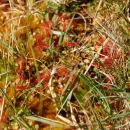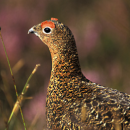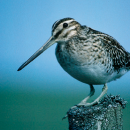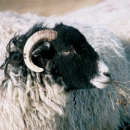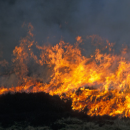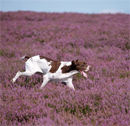15th February 2023
A huge peatland restoration project at Howesyke Farm in the Yorkshire Dales has been praised as an example of how to achieve landscape-scale moorland conservation and carbon capture.
Experts from Defra and the Environment Agency visited Howesyke Farm, a member of the Moorland Association, to examine the successful peatland restoration work, one of the largest such projects undertaken in the north of England.
The restored area covers more than 950 acres (equal to about 600 football pitches), across Thoralby Common, Stake Moss, Gayling and Newhouse moors and has enabled healthy vegetation and mosses to take root in areas that were previously bare.
Vital for storing vast amounts of carbon in the fight against climate change, peatlands are also home to a wealth of rare wildlife, help purify water and can reduce flood risk by slowing the flow of water downstream.
When peatlands are in a good state of repair, they are highly effective at carbon sequestration. But when they are degraded, they can start to emit the carbon they have stored and potentially add to the effects of climate change.
The peatland restoration work was facilitated in partnership with the Yorkshire Peat Partnership.
Robert Brown, of Howesyke Farm said: “In the past you could see the areas of bare peat, a sign of degraded peatland that is drying out and emitting carbon into the atmosphere. In the winter the moors are pounded by high winds and rain, washing peat into the river and further exacerbating the problem. Reversing historic damage is time consuming and incredibly laborious. It has been wonderful to partner with Yorkshire Peat Partnership and benefit from their expertise.”
Stuart Dent, Headkeeper at Howesyke, explained that a wide variety of innovative techniques were used during the restoration: “Helicopters were the most effective way to transport stones and timber up to the hilltop to create site-specific dams and restore the hydrology of the land. Natural coir matting was installed over bare areas to help prevent erosion and plugs of sphagnum moss and cottongrass were planted to help kickstart the process of revegetation. It has taken several years but the result is incredibly impressive. We run shoots throughout the season and all our visitors have commented on the transformation. It is a brilliant example of how shooting and conservation go hand in hand.”
Robert Brown said “We are absolutely delighted with the results. A good mix of moorland vegetation is now well established, with natural ponds and areas of blanket bog. A wide range of invertebrates will thrive in these habitats, and birds will also benefit from the increase in insect life. It’s a great result for the biodiversity of the area and to enable carbon capture as well.”
Moorland ‘grips’ or drains were installed on many moors in the postwar period to enable more of the uplands to be suitable for sheep grazing. Today there is greater understanding of the hydrology of upland areas and the crucial role of peat in carbon storage, so these grips are being removed and the land restored to preserve blanket bogs and slow the flow of water from the top of the hill to lower lying areas.
Managed for grouse shooting, Howesyke has thriving populations of Curlew, Lapwing, Golden Plover, Redshank and Ring Ouzel. In addition to peatland restoration, the owners Robert and Helen Brown have undertaken a series of conservation programmes over the past ten years including planting 100,000 trees, river management to create salmon spaw ning pools, and new ponds for waders.
ning pools, and new ponds for waders.




